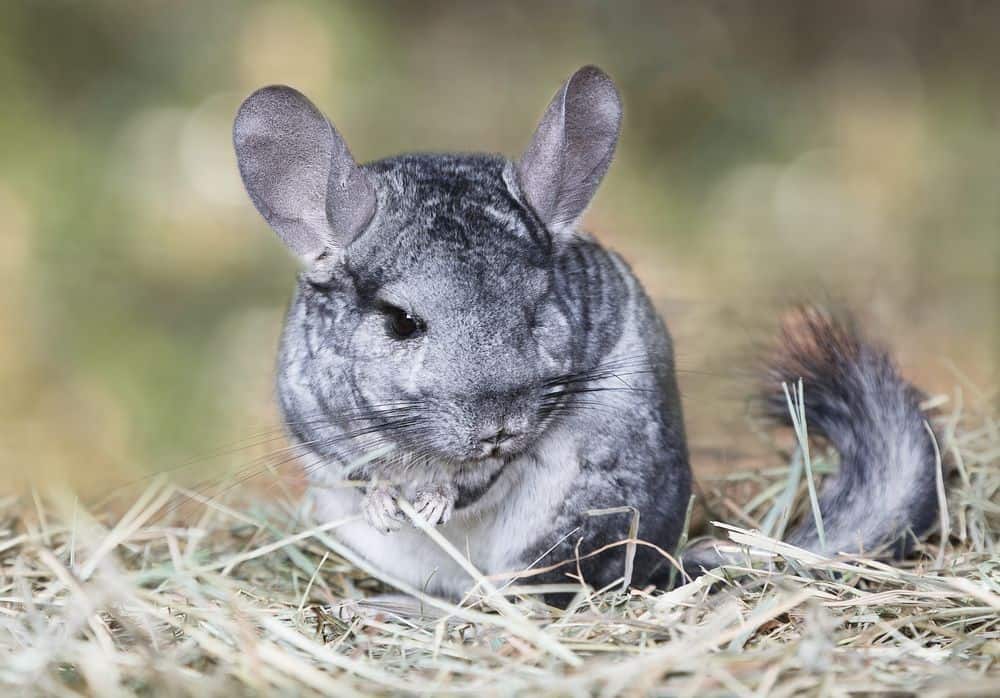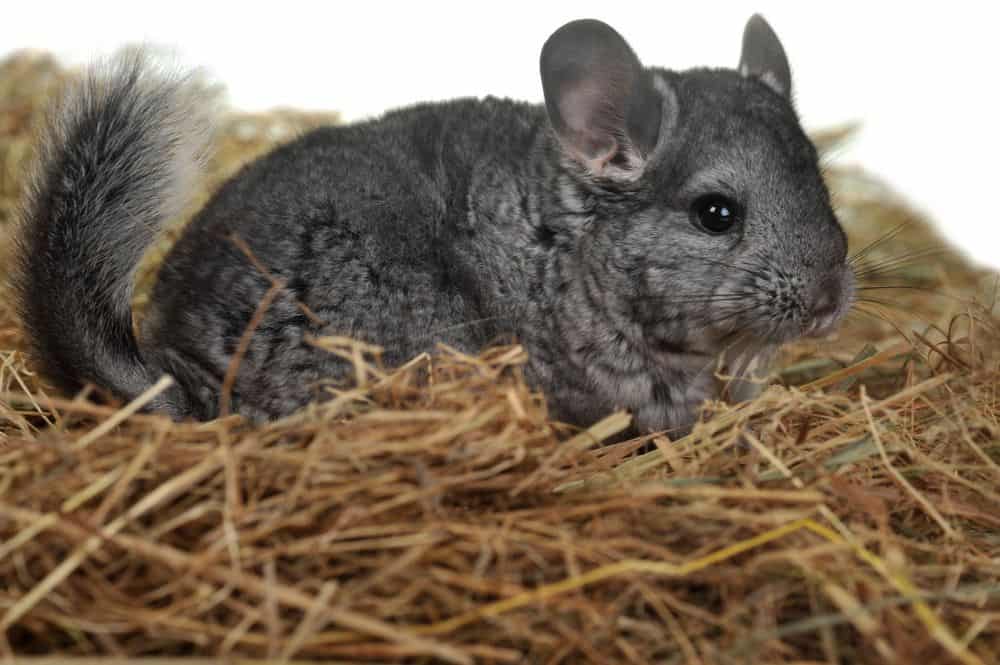
Anything that seems out of the ordinary can send you into a panic.
You can’t help wonder if something is seriously wrong with your newest, furriest family member.
With chinchillas, a common scare for new owners is the chinchilla pee color.
Most of the time, it is nothing to worry about.
But you need to know the normal color of chinchilla urine, so you know when it is different.
That could also indicate a serious problem.
Keep reading to learn everything you need to know about chinchilla pee, including what color it should be and what to do if it is suddenly a different color.
Contents
Chinchilla Pee Color

Healthy chinchilla pee is very dark and can sometimes have an orangey, reddish color. It can be easy to mistake this for blood. Your chinchilla’s pee comes out this dark red color because its urine is highly concentrated.
Chinchillas keep hold of water in their body for a long time. This is due to their natural habitat.
Chinchillas are originally from the South American plains, an area with a very dry climate. To keep from dehydrating, their body conserves as much water as it possibly can. That results in its pee having such a dark color.
Sometimes, you can mistake this dark color for blood, especially if you’re a first-time chinchilla owner. But this does not mean that there is never blood in their pee. Occasionally that can also be the case.
This usually happens when your chinchilla has a UTI. This is something you want to get treated right away, because a UTI can turn into sepsis. Sepsis is an infection in the bloodstream which causes damage to the bladder, kidneys and urethra. It can be fatal.
Chinchilla UTI
A UTI can be incredibly painful for your chinchilla. And, as mentioned, if it is left untreated, it may even become fatal.
Your chinchilla could contract a UTI in several different ways. One of the most common ways is by having a dirty cage. This can happen when the cage isn’t regularly cleaned and your chinchilla ends up sitting around in its own feces. Bacteria from the feces gets into your pet’s body.
Symptoms to look out for when it comes to UTIs in your chinchilla include barely urinating, hair loss, swelling around the genitals, tiredness, and of course, blood in the urine.
If you notice the latter symptoms, it is likely that the UTI has reached a later stage and the infection is already very serious. If this is the case, you need to get your chinchilla to the vet as soon as you possibly can.
Do Chinchillas Pee To Mark Their Territory?

Female chinchillas are known to be more territorial than males. They may stand vertically in their cage and spray their pee upward to mark their territory. Chinchillas are especially prone to doing this when new chinchillas are introduced to each other.
You may want to keep a keen eye out when introducing chinchillas to each other. It can turn nasty. Another way a chinchilla may mark its territory is through fighting, so make sure you’re ready to break up any fights.
Why Is My Chinchilla’s Pee Red?
If your chinchilla’s pee is red, it usually indicates blood in the urine. The most common cause of this is if your chinchilla has a UTI, also known as a urinary tract infection.
But before you start to worry, know that many owners mistakenly identify blood in their pet’s urine, because of the way chinchilla pee looks naturally. In other words, the pee may not have any blood in it and actually be the ideal color, as described above.
Do Chinchillas Get Periods?
Chinchillas do not get periods. Just like any other rodent, they go through something called estrous. This means that your female chinchilla will be in heat for a certain length of time.
Instead of menstruating and releasing an egg, chinchillas reabsorb the lining of the womb and the egg. This helps them save iron, which they can only restore through their diet, but is not easy for them to find naturally.
Just like other species reach puberty at a certain age, chinchillas also begin entering heat at a certain age. And this will continue for the rest of a chinchilla’s life. This differs from many other mammals, where the ability to reproduce ends when they reach menopause.
In the northern hemisphere, a female chinchilla will usually be in heat from November to May and in the southern hemisphere, this switches to May to November. During this time a female will alternate from being in heat for three to four days and then not for three to four days.
Chinchilla Urine Color: Final Thoughts
Chinchilla urine is naturally much darker, because they retain water for a longer period of time. Many new owners mistake this darker pee for bloody urine, but it is actually perfectly normal and nothing to worry about.
However, if there actually is blood in your chinchilla’s urine, that is absolutely something you need to worry about and get taken care of right away. Bloody pee indicates a urinary tract infection, which can lead to serious complications, including death.
If you are ever unsure if you are seeing pee in your chin’s urine, take it to a vet just to be safe. Much better to have your vet confirm that there is nothing wrong and be a little embarrassed, than to learn to late that your pet did have a UTI.
Leave a Reply